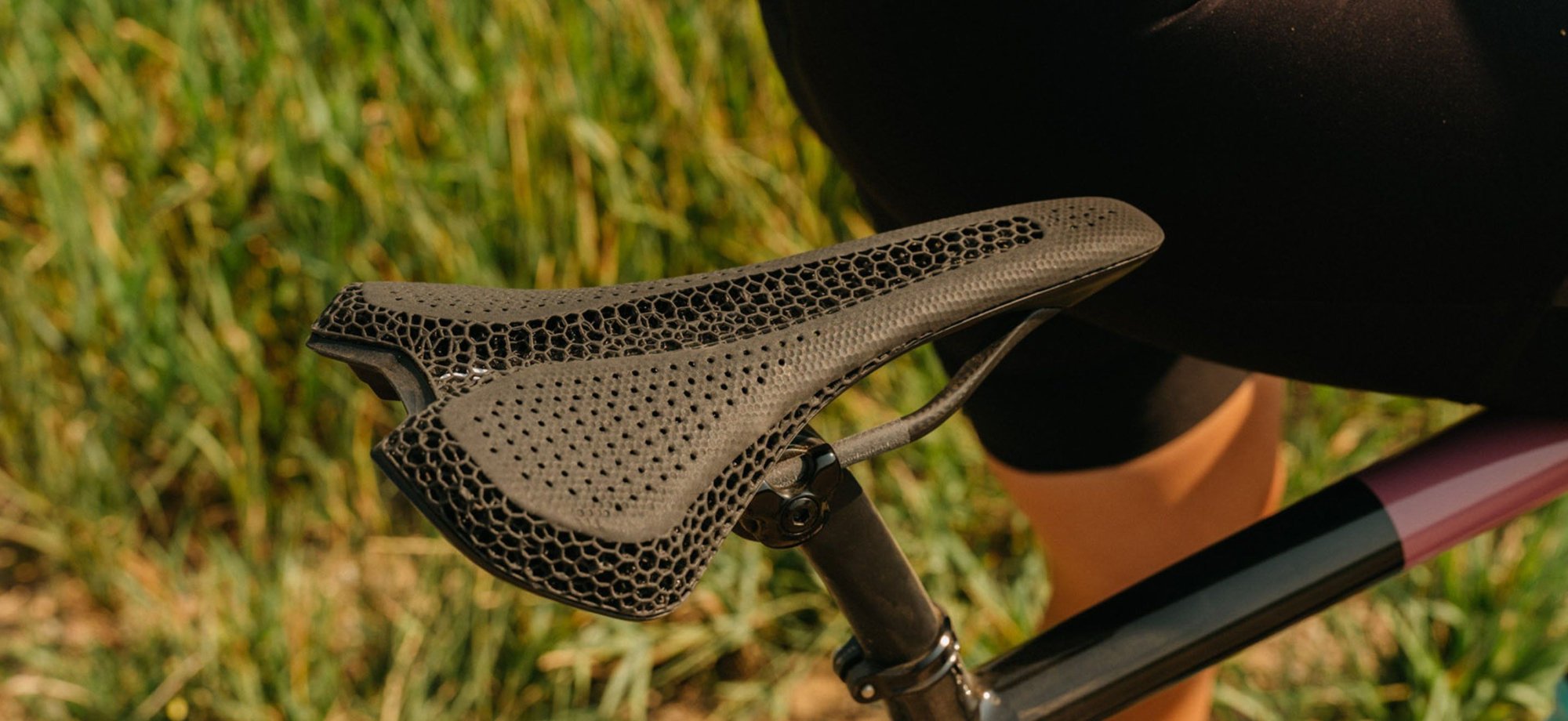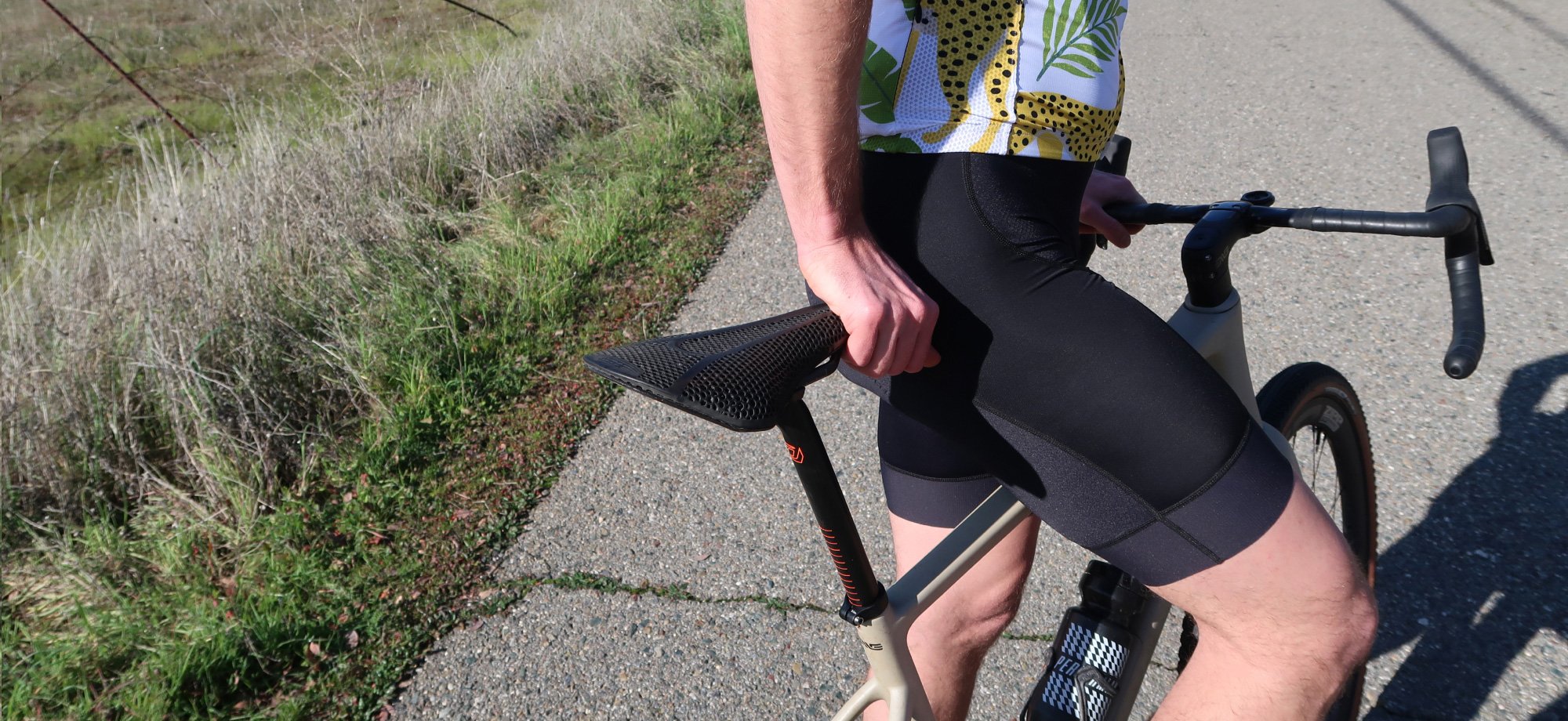3D-Printed Bike Saddles
Is this the future of cycling comfort?

As one of only three contact points between you and your bike, a good saddle can be the difference between comfort and pain. With new technologies changing the saddle landscape, product engineers think they may have cracked the code to a better ride. Let’s dive into the world of 3D-printed saddles to see what they are all about.
How are 3D-printed saddles made?
Just like a regular saddle, the base – made from either carbon fiber or a nylon polymer – is attached to a set of rails – made from carbon, titanium, or steel. But then, rather than adding foam padding and a synthetic cover, 3D-printing is used to create the cover material, which is attached to the base using an adhesive process. As of 2024, three major saddle brands offer 3D-printed versions of their most popular saddle styles: Specialized, fi’zi:k, and Selle Italia.
While there are differences in the saddle shapes and the material layups of the saddles, all three manufacturers use the same 3D-printing technology known as Carbon Digital Light Synthesis™ (Carbon DLS™). This process, created by Silicon Valley-based tech company, Carbon®, uses an elastomeric material called EPU 41 to create a lattice pattern that can be customized for density and texture.

Characteristics
of 3D-Printed Saddles
The 3D printing process allows each section of the saddle to be carefully fine-tuned to match the anatomical needs of that contact point. Before the introduction of 3D printing, manufacturers, like Specialized, used a complex combination of foam densities (known as MIMIC) to achieve a similar result. Now, with the help of 3D printing, engineers can manipulate saddle density in ways that were not possible before.
In addition to providing a higher level of comfort at contact points, 3D-printed saddles are also grippier. This tends to keep you better planted in a single position. If you tend to move around this might be a bad fit; however, if you stay still while riding, the added security can feel good.
3D-Printed Saddle Manufacturers

Specialized – Mirror
The biggest difference between each tier comes from the material of the saddle rails. Comp and Sport level saddles usually use chromoly or steel rails which offer exceptional durability but are also relatively heavy. Pro and Expert level saddles usually use titanium rails which are ultra-strong and lighter than steel. S-Works level saddles use carbon fiber rails, which are by far the lightest option. Carbon fiber rails are oval shaped which means that they require a special saddle clamp. Additionally, S-Works saddles have a 240 lbs rider weight limit to account for the decreased strength of carbon fiber compared to titanium or steel. Learn more about rail material.

fi’zi:k – Adaptive
Taking the most popular saddle designs from their catalog and creating 3D-printed covers, fi’zi:k makes both the Vento Argo Adaptive and the Antares Versus EVO Adaptive. While these saddles can be used for cross country and gravel, fi’zi:k mostly designed these saddles to be road focused.

Selle Italia – 3D
Printed and assembled in their Northern Italy factory, Selle Italia created their own flavor of 3D-printed saddles with textures that are unique. Currently, Selle Italia makes three 3D-printed saddle shapes: Novus, SLR, and Watt – the Watt is the only 3D-printed saddle on the market that’s specifically for time trial and triathlon.

Others/Custom
In addition to the big three, there are a few other smaller brands making 3D-printed saddles such as Bjrn and Joyseat – a manufacturer that uses a “Butt Imprint” kit to map your rear end and create a custom-tailored 3D-printed saddle. Of course, it does come at a cost.
Benefits of 3D-printed saddles?

So why would you get a 3D-printed saddle? It’s simple: comfort.
3D-printed saddles offer a unique set of qualities that can really improve your riding experience. Riders who love 3D-printed saddles say that the benefits are most noticeable on rides over three hours and on rough roads – exactly the sort of conditions that push on-the-bike comfort to its limits.
Also, 3D-printed saddles look pretty cool.
Downsides of 3D-printed saddles

These saddles are not exactly “affordable.” An S-Works Mirror saddle retails at $449.99. And while there are now cheaper versions available, they still cost considerably more than their traditional foam counterparts.
By nature of their construction, 3D-printed saddles are also a little heavier than the standard models. Usually, the difference is only around 15-30 grams, but if you’re trying to keep weight to a minimum, it’s worth considering.
Many riders have voiced concerns about durability and cleaning. As far as we can tell, the durability is similar to a standard saddle (foam density wears down too after all). Cleaning 3D-printed saddles is not actually bad. While the saddle structure allows dirt and mud to enter the saddle, it also allows it to be easily rinsed out.
Are 3D-printed saddles worth it??

It really depends. If you’re the type of rider who is always changing their setup and loves to try the latest equipment, then a 3D-printed saddle is an obvious choice. For other riders though, it can be hard to justify the purchase, especially if you already have a saddle you like. However, if you just can’t seem to get comfortable no matter what you try, perhaps a 3D-printed saddle is the solution. After all, feeling good on the bike is the best performance enhancer – and comfort will allow you to ride further and faster than ever before.
Related Articles
Understanding Saddle Rails
Weight, durability, and price all depend on the rails.
Learn More About Saddles


